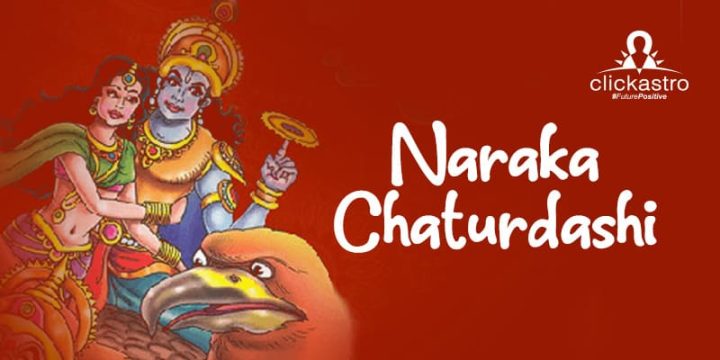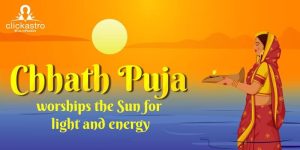Contents[hide]
Naraka Chaturdashi and Diwali on the same day Naraka Chaturdashi is the 14th day of the waning phase (Krishna Paksha) during the month of Kartik. Diwali is celebrated on the Amavasya (New Moon day) of the same month, which is the day after Chaturdashi. So, technically, Diwali comes one day after Naraka Chaturdashi. However, it is often seen, as in 2024, that both Naraka Chaturdashi and Diwali are observed on the same day. This is due to the discrepancy that exists between the solar and lunar calendars. According to the lunar calendar, the Chaturdashi Tithi is from October 30, 01:16 PM – October 31, 03:53 PM and Amavasya Tithi, which is Diwali, is from October 31, 3:53 pm – November 01, 6:17 pm As you can see, in the solar calendar, the day of Chaturdashi and the night of Diwali coincide on October 31 and hence both celebrations take place on the same date.Naraka Chaturdashi 2024 will be celebrated on Thursday, 31 October 2024.
Naraka Chaturdashi’s important Timings
- Sunrise – October 31, 6:35 AM
- Sunset – October 31, 5:45 PM
- Chaturdashi Tithi Timing – October 30, 01:16 PM – October 31, 03:53 PM
- Abhyang Snan Muhurta – October 31, 05:21 AM – 06:35 AM
Mythological Significance: The Triumph Over Narakasura
The genesis of Naraka Chaturdashi is intricately woven into the fabric of Hindu mythology, revolving around the compelling legend of the vanquishing of the dreaded demon Narakasura by the divine intervention of Lord Krishna and his formidable consort, Satyabhama. In the annals of Hindu scriptures, Narakasura is portrayed as a tyrannical and malevolent demon who terrorized the world with his wickedness. According to the sacred texts, it was on the day of Naraka Chaturdashi that the divine forces of Lord Krishna and Satyabhama converged to confront and defeat Narakasura, thereby liberating the world from his oppressive reign. This epic confrontation serves as a profound allegory, symbolizing the eternal battle between good and evil. The victory of Lord Krishna over Narakasura is a compelling representation of the ultimate triumph of righteousness and virtue, a theme celebrated with immense fervor during Naraka Chaturdashi. The festival, in essence, serves as a poignant reminder of the ageless values of morality and the relentless pursuit of light in the face of darkness.Religious Observances: Bathing and Lighting of Lamps
The commencement of Naraka Chaturdashi is marked by the break of dawn, as devout Hindus engage in a series of early morning religious rituals that hold deep spiritual significance. Rising before sunrise, they partake in a sacred act known as Abhyang Snan, a ritual bath of immense importance. During this purifying bath, individuals apply ‘Ubatan,’ a paste crafted from a blend of oil, herbs, fragrant flowers, and other beautifying ingredients. This ritual is not just a physical cleansing but is believed to cleanse the soul as well. It carries the profound belief that by performing this sacred act, one can rid themselves of the sufferings of hell, ensuring spiritual purification. Conversely, the failure to partake in this ritual is thought to lead an individual directly to hell. Following the Abhyang Snan, people apply kajal (kohl) to protect themselves from the “Kali Nazar” or the malevolent influence of the evil eye. Wearing new clothes after this holy bath is a common practice, symbolizing a fresh start and the shedding of past impurities. Homes are aglow with the warm light of oil lamps, diyas, and lamps, as they welcome Goddess Lakshmi, the deity of wealth and prosperity. Special offerings, or Prasad, are lovingly made to honor the Goddess, and heartfelt prayers are offered, beseeching her divine blessings. Family members, especially children, join in the celebrations by bursting firecrackers, adding to the jubilant and festive spirit that encapsulates Naraka Chaturdashi. This day truly exemplifies the essence of spiritual purity, protection from negative influences, and the celebration of the divine’s blessings in the form of wealth and prosperity.
Homes are aglow with the warm light of oil lamps, diyas, and lamps, as they welcome Goddess Lakshmi, the deity of wealth and prosperity. Special offerings, or Prasad, are lovingly made to honor the Goddess, and heartfelt prayers are offered, beseeching her divine blessings. Family members, especially children, join in the celebrations by bursting firecrackers, adding to the jubilant and festive spirit that encapsulates Naraka Chaturdashi. This day truly exemplifies the essence of spiritual purity, protection from negative influences, and the celebration of the divine’s blessings in the form of wealth and prosperity.
Worship of Deities: Goddess Lakshmi and Lord Hanuman
Naraka Chaturdashi is not merely a day of celebration but a profound occasion for devotion and worship in the Hindu calendar. Alongside the veneration of Goddess Lakshmi, Lord Hanuman, the epitome of strength, courage, and devotion, holds a special place in the hearts of devotees on this sacred day. Devotees gather in temples and homes to offer their heartfelt prayers and devotion to Lord Hanuman. They bring fragrant flowers, aromatic oil, and soothing sandalwood as offerings to the deity, expressing their deep reverence and gratitude for his unwavering protection and strength. A significant part of the worship involves the preparation of a special ‘Prasad,’ a sacred offering to Lord Hanuman. This Prasad is carefully crafted from ingredients such as rice flakes, sesame seeds, jaggery, and coconut. Each element of this offering symbolizes different aspects of devotion and spirituality, creating a meaningful and sacred connection between the devotee and the divine. Naraka Chaturdashi, with its dual focus on Goddess Lakshmi and Lord Hanuman, encapsulates the essence of devotion, gratitude, and the pursuit of divine blessings. It is a day where devotees express their unwavering faith in these deities and seek their guidance and protection in their spiritual journey.Culinary Delights and Fresh Harvest Tradition
One of the distinctive and cherished facets of Naraka Chaturdashi is the tradition of preparing delectable dishes using hand-pounded rice, commonly known as “poha” or “pova.” This tradition goes beyond mere culinary delights; it symbolizes a profound connection to the harvest season and the celebration of agricultural abundance.Freshly harvested rice, meticulously pounded by hand, serves as the core ingredient in these culinary creations. The use of this rice signifies the bountiful yield of the season and the gratitude for nature’s generosity. It is a reminder of the essential role that agriculture and the harvest play in sustaining life. This practice is not confined to rural areas but also finds enthusiastic participation in urban settings, particularly in Western India, where the fusion of tradition and modernity is a hallmark of the culture. Families come together to prepare an array of mouthwatering dishes, each dish a testament to the rich agricultural heritage of the region.
As the aroma of these freshly prepared delicacies fills the air, it encapsulates the essence of Naraka Chaturdashi – a celebration of abundance, gratitude, and the deep-rooted connection between the festival and the harvest season.







